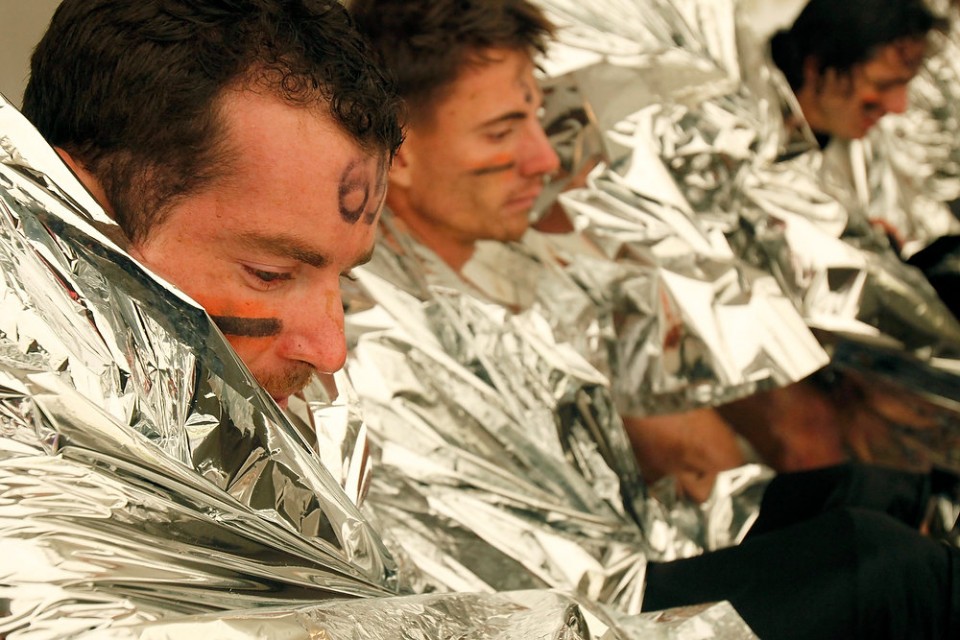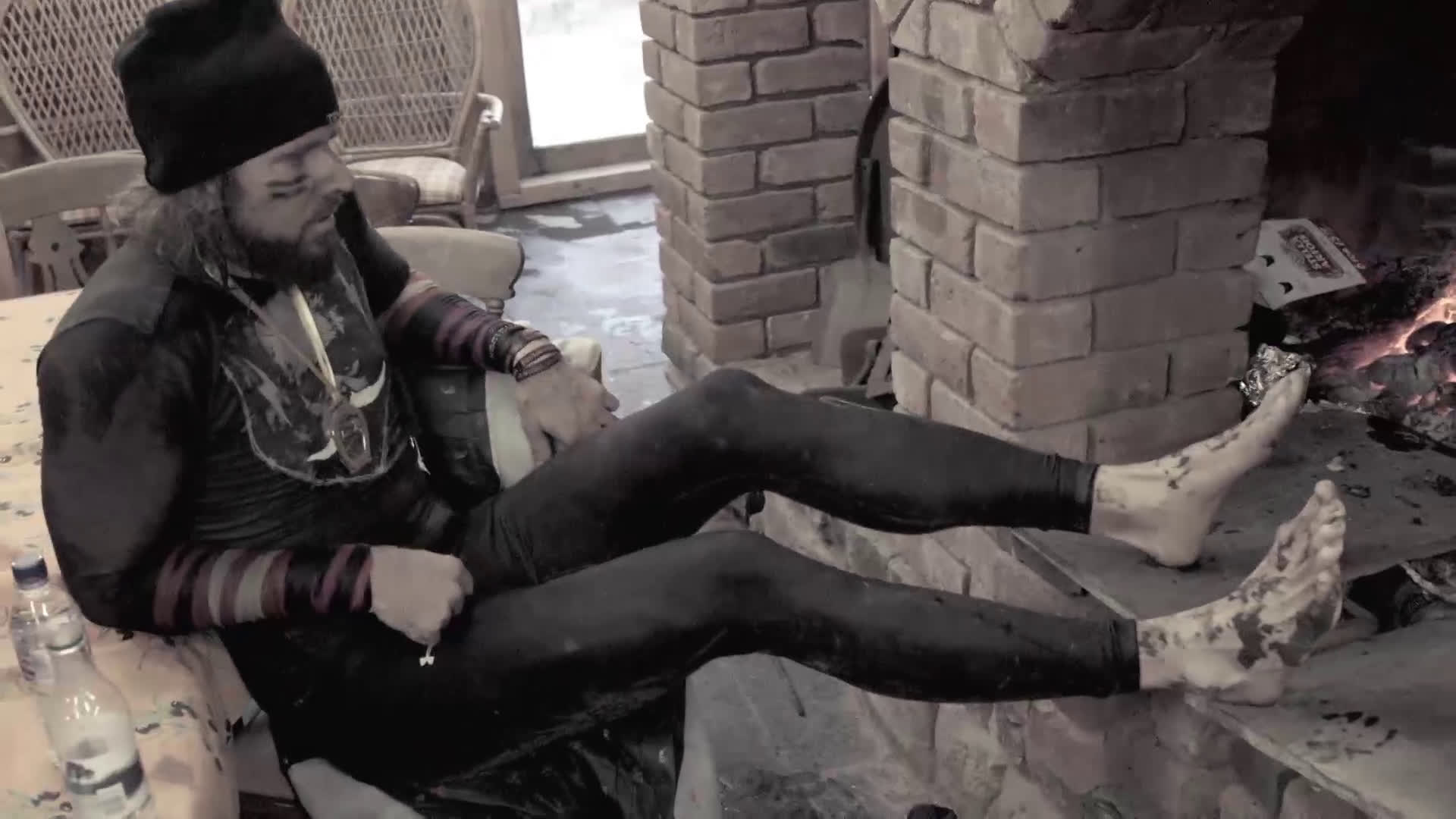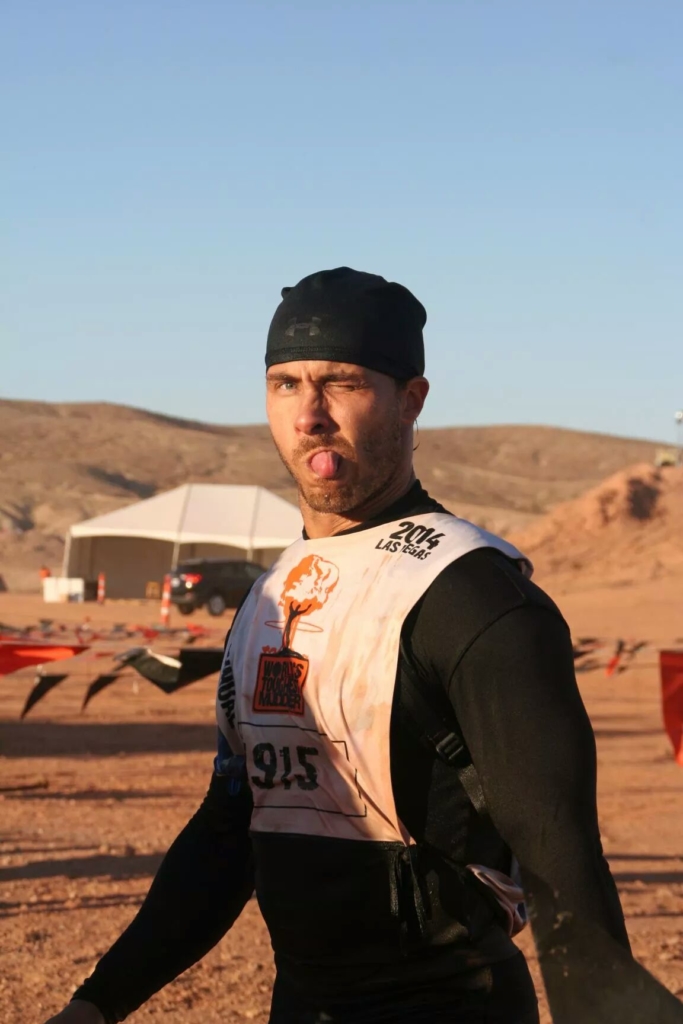
The sport of obstacle course racing (OCR) prides itself on the races being sufferfests. Heck Scott Keneally’s new documentary about the sport is even titled Rise of the Sufferfests. Some of the most memorable scenes in this movie are the visuals of the participants battling hypothermia after completing the events. As I watched this documentary, a smile came across my face. Not because I enjoy watching this hypothermic aftermath, but because I was amazed that even after three of the brutal Tough Guy events still, no one had informed many of the people at the event that wearing WET clothing will lead you to hypothermia faster than no clothing as all. In fact, he continued to sit in those clothes the entire time he was attempting to warm himself after the race.

Photo Credit: Rise of the Sufferfests Documentary
Poor guy… at least Jon Albon got Appleton out of his wet clothes.
In this article, I’m going to explain the science of our thermoregulation system, how clothing plays a role in both keeping us warm and cools us down; as well as how to best dress for optimal thermoregulation during an OCR. It’s important to note that numerous variables play a part in how well we can deal with exposure to both the heat and the cold. Acclimation to the environment is a major factor. If you are going to be swimming in cold water and you never swim in cold water, then you are in trouble! If you have lower body fat levels, then your body will not retain heat as well. A little more natural insulation is good for a race like World’s Toughest Mudder where hypothermia almost always plays a role. However, being able to shed that excess heat is more advantageous at a race held in Temecula during the summer. The bottom line is the adage of “proper preparation will prevent piss poor performance” definitely holds true when it comes to thermoregulation.
Thermoregulation for OCR – The Science
The human body is a heat generating machine. As we evolved and became more intelligent, we began wearing clothing. This ability to add and shed insulation combined with the changing environment around us eventually caused us to lose the fur that protects other animals and gives them the ability to hold in body heat. This made us much more adaptable to various climates, but it also can leave us vulnerable given the wrong conditions. The human body cools itself in three ways. These cooling effects can happen individually or all at the same time depending on the environment. Our body cools itself in the following ways:
- Conduction– the transfer of heat being emitted by one body and then absorbed by another (placing ice on an injury)
- Convection– the transfer of heat through the circulation of air (sitting in front of a fan to cool down)
- Evaporation– reduction in temperature resulting from the evaporation of sweat, which removes latent heat from the surface of the skin.
It’s all fine and dandy to know the different ways in which we regulate body temperature, but the key is how this all applies to the environment in which we will be competing.
Sweating is probably the most efficient method of heat loss for the human body. The evaporation of that sweat helps remove heat that is right next to the skin. This air next to the skin is warmed due to the body conducting heat and shedding the heat to that air. Keeping this warm air near the skin moving is the key to our loss of heat. This is one of the main purposes of Under Armour type fabric. This clothing wicks away the moisture (speeding evaporation), allows air transfer to recycle the warm air next to the skin, and accomplishing this with a fabric that won’t absorb a lot of moisture, allowing it to dry quickly.
The “Cold Gear” Under Armour fabric adds that fuzzy underneath layer to create a space between the compression shirt and your skin. This space allows some of the air next to the skin that has been warmed by our body to be held next to the skin to help insulate you from the colder air outside. This works great unless the fabric is soaked because unfortunately, this extra fabric will also cause the clothing to retain more water. This is a huge negative considering that water can absorb heat much more effectively that air is thereby causing the body to lose heat much faster (through conduction).
This is “no Bueno” in a cold environment. Convection cooling comes in when the air is moving (like on a windy day) which further helps speed the other two processes. Every runner is keenly aware the “cooking” effect that happens on a warm day with no breeze when you have to stop at a stoplight and you start to overheat. At least while running the air is moving!!!
The main points to remember when deciding what to wear to an OCR is what type of environment will you be racing in as how is the course set up.
The Environment
- Course layout
- How many water submersions are there and will there be a lot of “dry time” during the race?
- Is the course open or shaded? This will matter a lot on warm sunny days.
- Am I likely to be stuck at an obstacle for any extended period?
- How long with the race take (will I be out there in the heat of the day?
- Weather
- What are the forecasted low and high temperatures?
- Is it an arid or humid area?
- Will the sun be shining or will it be cloudy?
- Will it be raining or windy at any time during the event?
Having a better understanding of the conditions in which you will be racing will then allow you to better choose the appropriate clothing for that day. Remember that most of the clothing we own is designed to be worn dry. Once it gets wet most of its abilities to protect us from the weather is compromised. There are a few exceptions to this out there so it will be important to consider having these in your collection just in case.
The Clothing
Most clothing is designed to provide a stable temperature environment on land. Your regular cold weather clothes are designed to trap air near your skin to provide a barrier from the cold outside air (this is why layering is effective because it allows for more air to be trapped). Clothing designed for warmer conditions is thinner and lose fitting to facilitate the loss of the warm air trapped next to your body.
The problem with nearly all clothing is it flattens when it gets wet, and it loses its ability to trap air and keep you warm. On top of that, the wet clothing now sucks heat from the skin because of water’s ability to absorb heat. Now your wet clothing will make you colder whereas bare skin would allow the water to evaporate quickly. Not to mention the fact that the soaked clothing is now adding weight this is not good when you have to climb obstacles. The conditions in which obstacle racers compete make clothing selection much more complicated than in other sports.
 Warm Conditions–
Warm Conditions–
- Wear lighter colors which absorb less heat from the sun
- Lycra or Under Armour type fabric breathes better and will help keep you cooler
- If you are going in and out of the water a lot of long pants and sleeves will hold water longer and therefore help cooler you more than shorts and a minimal top. The opposite happens on a dry course.
- Cold Conditions
- Consider how many times you will be in and out of the water and where these submersions will occur on the course. If you are dry most of the first half of the event, then consider wearing more insulated clothing. However, if you will be wet early and often then the less clothing, the better. As long as you are moving, you will be generating heat. However, if you are wearing a wet sleeved shirt, then that fabric will be absorbing that heat from your body faster than you can create it for the duration of the race.
- Lycra or Under Armour fabrics are still the best choices, but if you are going to be wet choose the varieties that will she water the quickest (for example the UA Heat Gear sheds water faster than UA Cold Gear).
- Darker colors will absorb more solar heat so opting for black or Navy Blue on a cold day would be a wiser choice.
Other Options
There are a variety of other clothing options available to obstacle racers, but most of them are very specific in their use. For example, a wetsuit can be worn if you will be in and out of the water a lot like at World’s Toughest Mudder, or to help keep you warm for an event in extreme cold (sustained temperatures under 30 ° F) but is usually not a good choice for most races. Another similar option that is more appropriate for more traditional OCRs and works like a wetsuit is an Australian product called Frog Skins. This is kind of like a base layer for divers to wear under a wetsuit but will work for this application. In fact, when you can’t find exactly what you are looking for at the local sporting goods store your local dive shop will often have a more water sport appropriate option available.
The last option that might help stave off hypothermia in our sport is a new product specifically developed for OCR. It’s called the Neptune Thermoregulation System by Neptune Performance Products. A product I have been helping develop and is dear to me. This piece of apparel provides chemical, thermal heating or cooling to the athlete to help better maintain core body temperatures in any environment without limiting airflow like a wetsuit would which can lead to overheating.
In the end, having a better understanding of what you are trying to accomplish with regards to thermoregulation during races as well as coming prepared can only assist athletes to reach his/her peak performance. Plan ahead and bring all your gear because you never know what might come your way. Good luck and stay warm out there… or cool as the case may be!
Disclaimer: The viewpoints expressed by the authors do not necessarily reflect the opinions, viewpoints and official policies of Mud Run Guide LLC, or their staff. The comments posted on this Website are solely the opinions of the posters.


Leave A Comment